This simple compact bach designed by Fearon and Hay has a warm and nurturing interior, which is the ideal counterpoint to the bach’s wild and isolated location
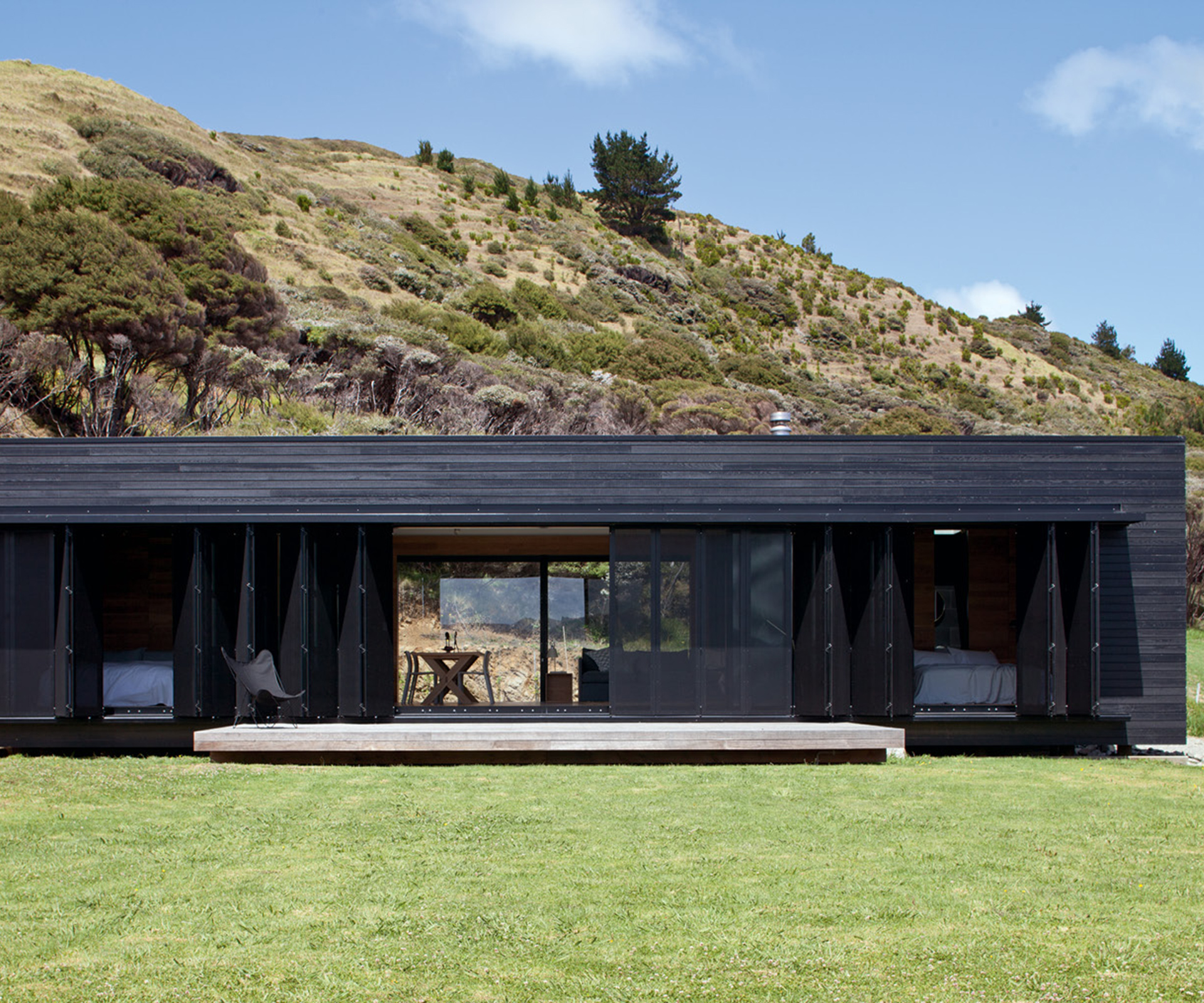
Architects Jeff Fearon and Tim Hay have had the luxury of designing a number of homes with expansive budgets and large floor plans. In recent years, however, they have nurtured a smaller-scale idea they yearned to put into practice: a simple, compact bach concept “flexible enough,” Jeff says, “to put down in a number of spots” – not a moveable building, you understand, but a plan that was a little less site-specific than the bespoke landscape occupation of some of their other designs.
Their first opportunity to do this came on a piece of land at Oruawharo Bay on Great Barrier Island owned by Tim’s parents, Peter and Jan Hay. In 2002, Tim and Jeff had designed a house in the bay that the Hay family have holidayed in ever since (the house featured on the cover of our December/January 2004 issue).
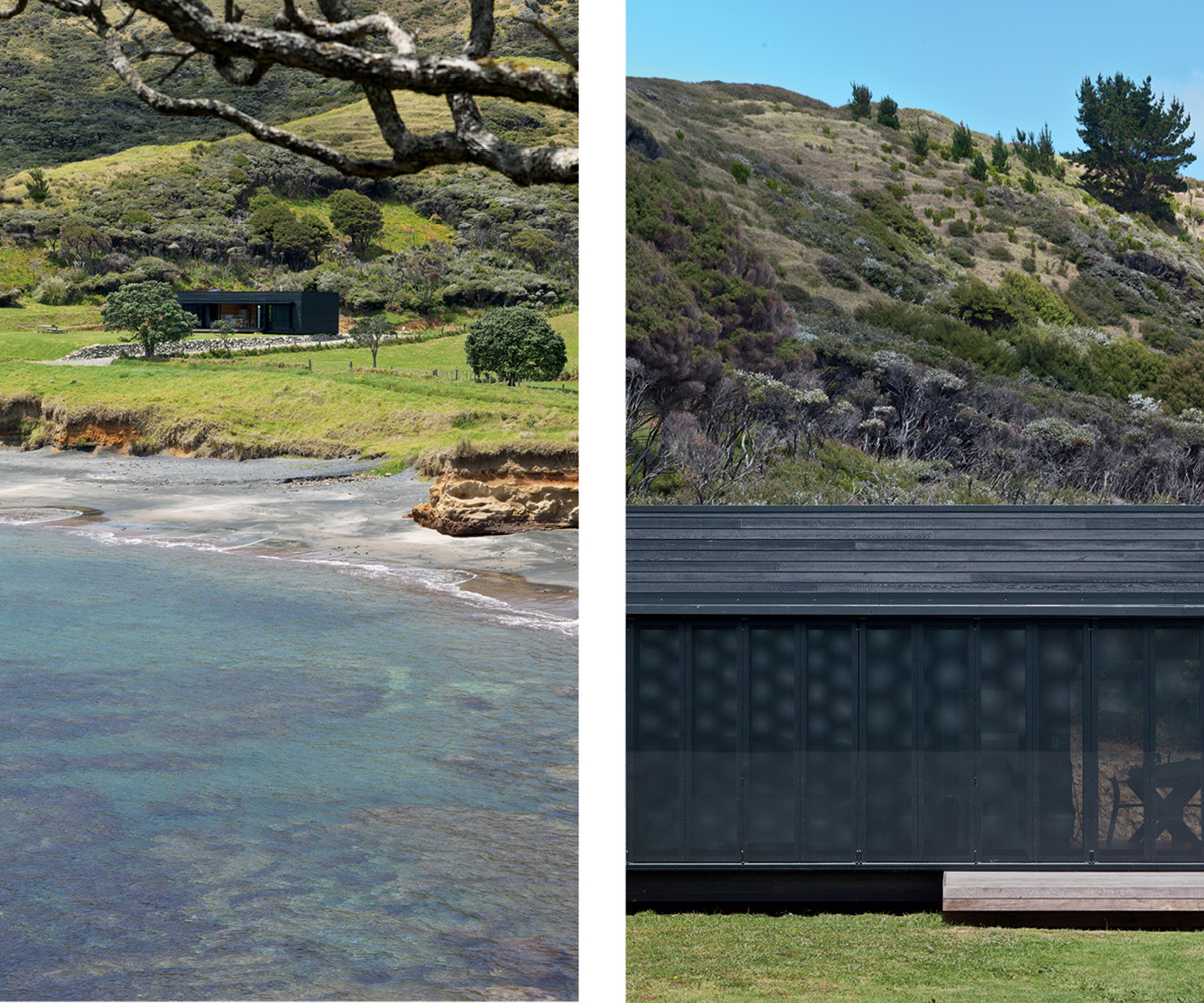
More recently, however, with Tim and his brother Jeremy having families of their own, the Hays realised they were going to need a little more space if the holidays on the island they had always enjoyed were going to continue with enough accommodation for everyone. “We’d been talking about it for four or five years,” Tim says. “Eventually Dad said we better get on with it.”
Tim and Jeff worked on the project in close collaboration with Tim’s sister, interior architect Penny Hay. The trio didn’t want to replicate the approach they had taken at the main house, a modernist pavilion-style home made of concrete, glass and steel. “The idea was that it wasn’t to be an annex of the main building,” Tim explains. “The main house is in quite a dominant position in the bay and we didn’t want to overwhelm that with another building. We wanted the colour palette of this one to be recessive, with the black exterior working in with the manuka and kanuka on the hill behind.”
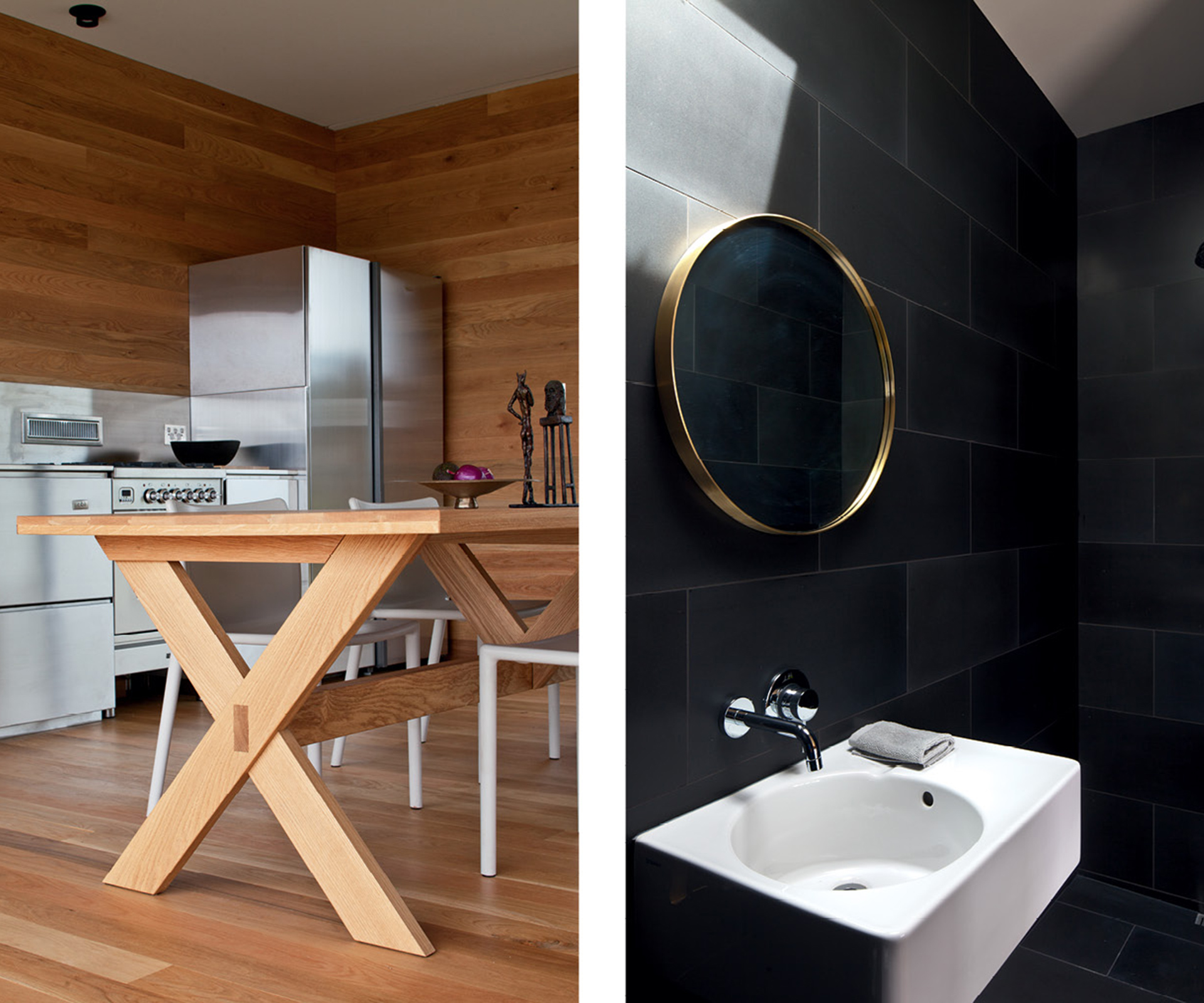
The new house, dubbed Oruawharo Cottage (like the main house, it is available for short-term rentals), has two bedrooms and 100 square metres of floor space, a scale that lends the interior a sense of intimacy and containment.
It is a black, rigorously symmetrical timber rectangle that, thanks to its piles being contained in a concealed excavation, appears to float just above its site. It faces north across a wide lawn towards the bay, with the dramatic hills and headlands of Great Barrier Island receding into the distance. It’s a view that can also be enjoyed looking through the cottage from the small deck and courtyard on its landward side.

So far, so simple: the real interest here is in the immaculate resolution of the dwelling’s finer details. “We all enjoyed the challenges of balancing the restrictions of the floor area with clever design,” Tim says. “If you laid the spaces out as simple boxes it wouldn’t work, so you develop strategies to counter the restrictions of the square metreage.” These strategies include the way the bedrooms feature frameless, sliding barn-style doors that allow lateral views through the spaces when open, for example.
Similarly, the two bathrooms are tucked carefully behind more sliding panels in each of the bedrooms. And the kitchen is a simple stainless steel unit with edges that contribute to a feeling of “order and containment”, Tim says. Adds Jeff: “A building of this scale means you can be focused and passionate about every corner and junction.”
[quote title=”A building of this scale” green=”true” text=”means you can be focused and passionate about every corner and junction” marks=”true”]
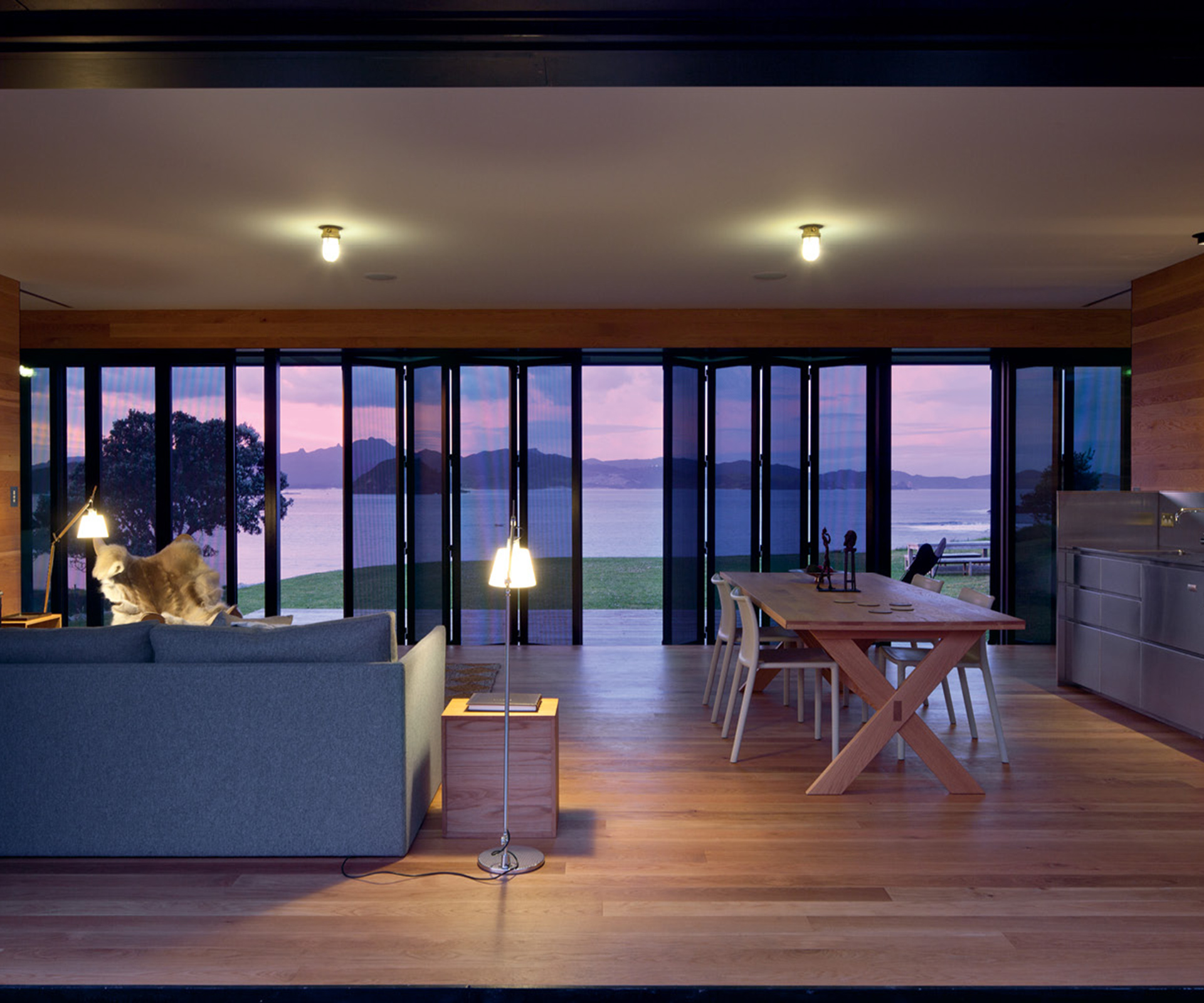
The cottage’s floor and walls are lined in oiled oak boards, a warm, light counterpoint to the black, band-sawn cedar exterior. “You’re in this wild, isolated, amazing environment, so we wanted the interior space to feel nurturing,” Penny says. Penny specified the same timber for the built-in headboards of the low beds, for the sliding interior doors and for the handsome dining table she designed especially for the space. (She also custom-designed the sofa and the small bedside cabinets).
The 2.6-metre high glass sliders that line the front of the house create an elegant horizontal frame for the view. “Presenting a coastal landscape through a horizontal frame is something we really enjoy doing,” Jeff says. “It’s a relaxed proportion that emphasises the horizon and the receding layers of hills.”
[quote title=”Presenting a coastal landscape through a horizontal frame” green=”true” text=”is something we really enjoy doing” marks=”true”]
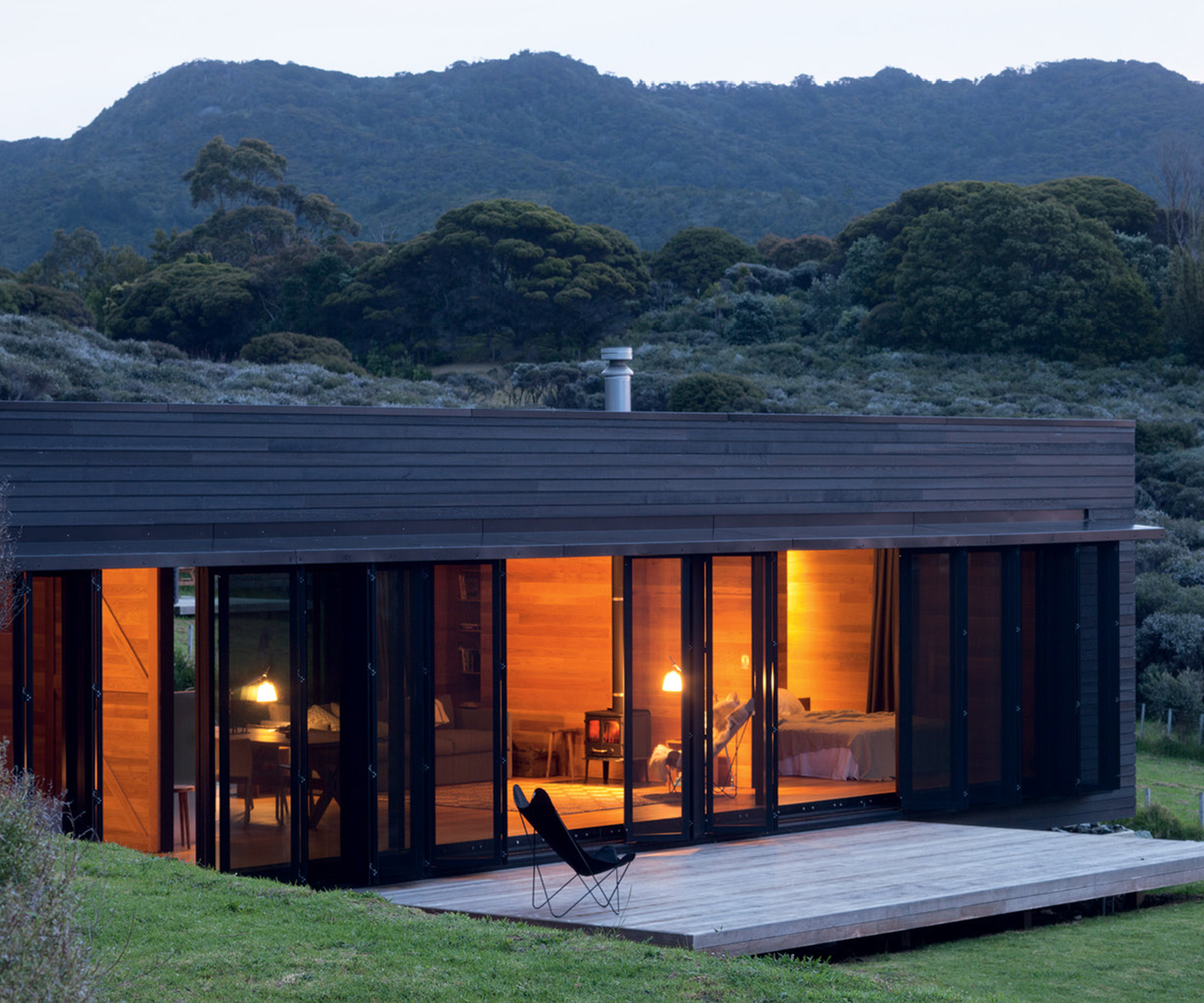
The apparent simplicity of the building disguises its almost infinite adaptability. Perforated black metal screens line the northern elevation, an ethereal layer that moderates sun and ventilation, allows for a greater sense of security when the house is locked up, and provides a near-perfect atmosphere for an afternoon nap. “You can be in your bedroom with the screens closed to create a sleepy sort of layer that moderates the intensity of the light without blocking the views,” Tim says. Behind the cottage’s sliding glass doors, almost 100 metres of heavy charcoal wool felt curtains on elongated tracks provide night-time cosiness in a storm and modulate the acoustics of the spaces. Like all Great Barrier Island homes, the cottage is off the grid, powered by six solar panels, and with its own water catchment and on-site sewage treatment.
The success of the cottage can so far be measured in the jostling among the Hays for which branch of the family gets to stay in it this Christmas. And the adaptability of this compact building form is about to be put to the test on Jeff’s own property in Northland. “It can be a simple stripped-back back building or it can be layered up with quite a lot of detail,” Jeff says. Just how his own version of this prototype proceeds is yet to be revealed. In the meantime, Oruawharo Cottage looks like a very successful test run. –Jeremy Hansen
Q&A with architects Jeff Fearon and Tim Hay and interior architect Penny Hay
Is the idea of this type of building something you’ve been exploring lately?
Tim Hay It’s a typology that Jeff and I had started to play with, then this one became site-speciific. You can build things that aren’t large but have an openness that makes them feel that they aren’t limited. Instead of putting money into the square metreage, you can put it into the details and materials.
Jeff Fearon We wanted to come up with a design that was flexible enough to put down in a number of spots. It’s a basic strategy that we’ve embraced: a building with an outlook and a sheltered courtyard behind. It’s a simple building that sits above the land, is symmetrical and has a fair amount of repetition. It has a simplicity and scale that is potentially quite widely applicable.
It has quite a different feel to the glassiness of the main house.
Penny Hay You’re in this wild, isolated, amazing environment, so we wanted the interior space to feel nurturing. It’s a really harmonious space to be in. It’s not confronting or trying too hard. It’s an offering for you to enjoy rather than figure out.
Oruawharo Cottage
Oruawharo Cottage is available to rent from $450 per night
holidayhouses.co.nz/properties/23894.asp
Words by: Jeremy Hansen. Photo by: Patrick Reynolds.




